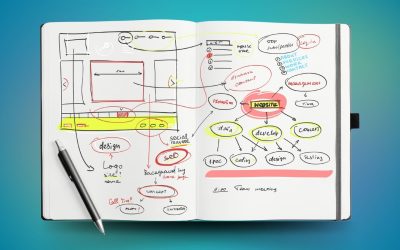About 90% of all Americans have cell phones, and as of January 2014, nearly 60% of those are smartphones. These numbers only increase in the professional world, and personal device use doesn’t stop when the workday begins.
Many employees use their personal devices to make phone calls, send texts or check their social media accounts while they’re on the clock. And while a few minutes here and there won’t typically hurt a business, excessive use can be a big distraction – and become a problem.
Some companies, like FedEx, have gone to the extreme and banned cell phones from the workplace completely. However, employers who draw a hard line on personal device use run the risk of micromanaging, which may do more to hurt morale than help productivity. Many companies are finding that it’s more effective to take a balanced approach.
Below, we’ve put together a list of 5 ways employers and managers can manage personal device use in the workplace, without hurting morale:
1. Make it about performance
Managing personal device use in the workplace is often an issue of performance. If your top performers are checking social media a few times per day but are still producing great results, it’s not a big deal. However, when employees are on their phones frequently and they’re failing to perform at a high level, it starts to become an issue. Employers and managers may want to handle personal device use on a case-by-case basis. This means identifying poor producers who are frequently on their devices, and making the conversation about performance, not just the distraction at hand.
Do you need a Website Security review or Application Maintenance? Check out our Website Support page for more information.
2. Set reasonable limits
It’s important to set – and make sure your employees understand – reasonable boundaries for personal device use at work. A few minutes spent on a cell phone is fine; hours at a time is not. Ideally, your employees will be able to intuit what is reasonable and what is not, but have a game plan in place for any misunderstandings. Both managers and employees need to be on the same page about what constitutes a reasonable break. Make sure employees are aware of your definition of a reasonable break, and enforce that definition by asking those who spend too much time on personal devices to tone it down.
3. Enforce personal device etiquette
Personal device use at the workplace also requires certain guidelines in order to avoid distracting other employees. For example, employees who need to make or take personal calls should be asked to step out of the office or go into a private area to not distract others. Those who want to listen to music should use headphones. This also means putting ringtones on silent, letting calls go to voicemail during meetings, and avoiding inappropriate behavior like using profanity on personal calls.
4. Use common sense
Though the traditional office isn’t one of them, certain workplace settings do require a total ban on personal device use. For example, employees who operate heavy machinery, drive trucks, or work in kitchens should never use cell phones on the clock, since it could create a safety hazard. This also applies to retail, customer service and other customer-facing jobs. Allow these employees to use cell phones on their breaks and when they’re not on the clock, but to avoid poor service, accidents, or even lawsuits, keep personal devices off the table.
5. Create a policy
When less formal policies fail to limit personal device use in the work place, it may be time to set out some clearly defined rules on paper. A detailed personal device policy for the workplace should outline etiquette, rules and guidelines for usage, access, security and privacy, and consequences for violating the policy. Both employees and managers should be required to read and sign these documents, and disciplinary action should be enforced when employees fail to adhere to the rules.
We live in a mobile, digital world, and personal device use in the workplace can’t be completely avoided – at least not without serious consequences for workplace morale and employer-employee trust. However, with clear guidelines and reasonable expectations in mind, managers can ensure that productivity isn’t being harmed by occasional personal device use.

Abby Perkins is Editor in Chief at Talent Tribune, a Software Providers blog dedicated to jobs, workplace culture, and HR technology.




